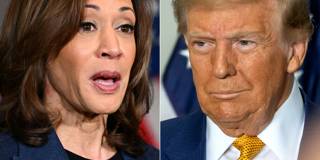OnPoint Subscriber Exclusive
The Big Picture brings together a range of PS commentaries to give readers a comprehensive understanding of topics in the news – and the deeper issues driving the news. The Big Question features concise contributor analysis and predictions on timely topics.

The US Election and America’s Future
From the economy to foreign policy to democratic institutions, the two US presidential candidates, Kamala Harris and Donald Trump, promise to pursue radically different agendas, reflecting sharply diverging visions for the United States and the world. Why is the race so nail-bitingly close, and how might the outcome change America?